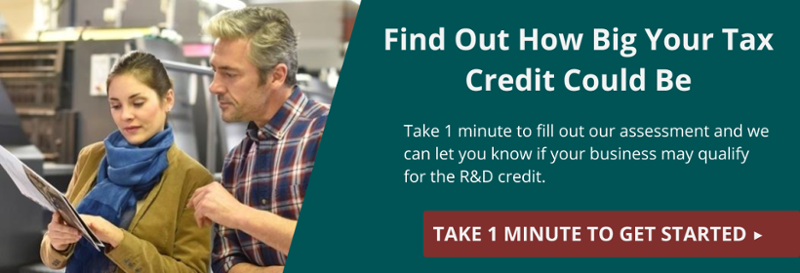 In manufacturing, design meetings can be an arduous process. With everyone from the CEO to engineers and welders offering their input, it can be difficult to reach a final decision.
In manufacturing, design meetings can be an arduous process. With everyone from the CEO to engineers and welders offering their input, it can be difficult to reach a final decision.
But design meetings aren't just tiresome problem-solving exercises. They may actually be costing your company money if you aren't taking advantage of potential R&D tax credits.
Qualifying Design Meetings
All design meetings (both internal and external) with a customer or prospect may qualify as R&D activities eligible for tax credits. As a general rule, "design" is comprised of three elements known as FFF: form, fit, and function. Therefore, any meetings or conversations related to FFF can qualify as R&D.
Four general categories for qualifying meetings include:
- Prospect discussions about a new part/process
- Customer discussions about improving an existing part/process
- Customer discussions about a new part/process
- Internal discussions related to all of the above
FFF Defined
To qualify for R&D tax credits, your design meetings will have to pass the FFF test. Here's a more in-depth look at each of the three F's:
Form — The shape, size, dimensions, mass, weight and other parameters that uniquely distinguish a part or product. For example, you might describe a screw's form as “Self-Tapping Sheet Metal Screw #8 x 1/2 Hex Head.”
Fit — The ability of a part to physically connect to, interface with, or become an integral part of another part. For example, for a screw to fit correctly in the final product, it must fit within the specifications for the space around the screw relative to a faceplate hole, or the location of the screw's top position relative to the product surface.
Function — The action(s) that a part is designed to perform. In our example, the screw is intended to hold other parts of the product together.
Track Your Meetings
Often overlooked is the fact that design meetings typically begin early in the sales cycle and continue up to the point of production. For example, a large electronics customer wanted their sheet metal cabinetry assembled with self-tapping screws. From the customer's point of view, this may have been the lowest cost solution. But when a self-tapping screw is re-inserted into the existing hole, the screw will lose its holding power by destroying the existing threads.
"I shared with the customer in a design meeting that using self-tapping screws to hold an access plate may not be the best choice due to the number of times a service tech might need to remove the panel over the life of the product," says John Madsen, manufacturing practice leader for Black Line Group. "After additional design meetings, we were able to agree on a solution that met the form, fit, function and cost requirements, and the customer was very pleased with the outcome."
Whether the product was secured with rivets, PEMs or screws had no bearing on qualifying R&D activities. But because the discussion revolved around FFF, the company was able to pursue R&D tax credits while improving customer success. By tracking your meetings and cataloging discussion topics, you may be able to secure valuable tax credits that will help your company grow.





